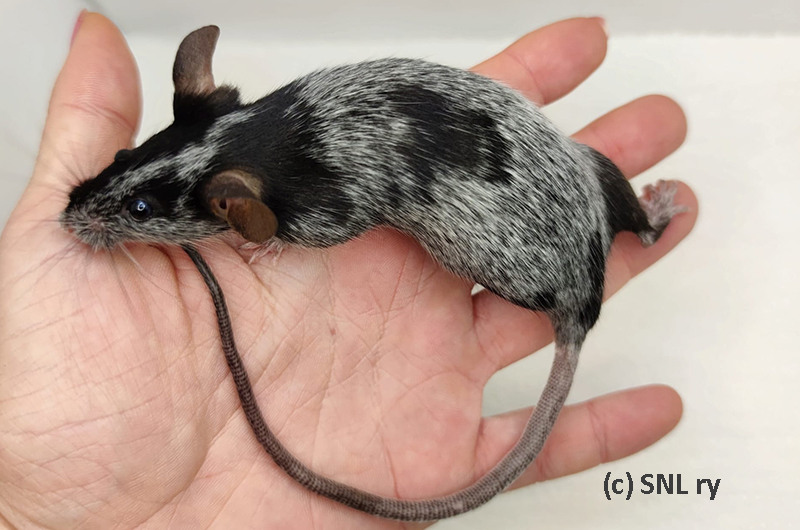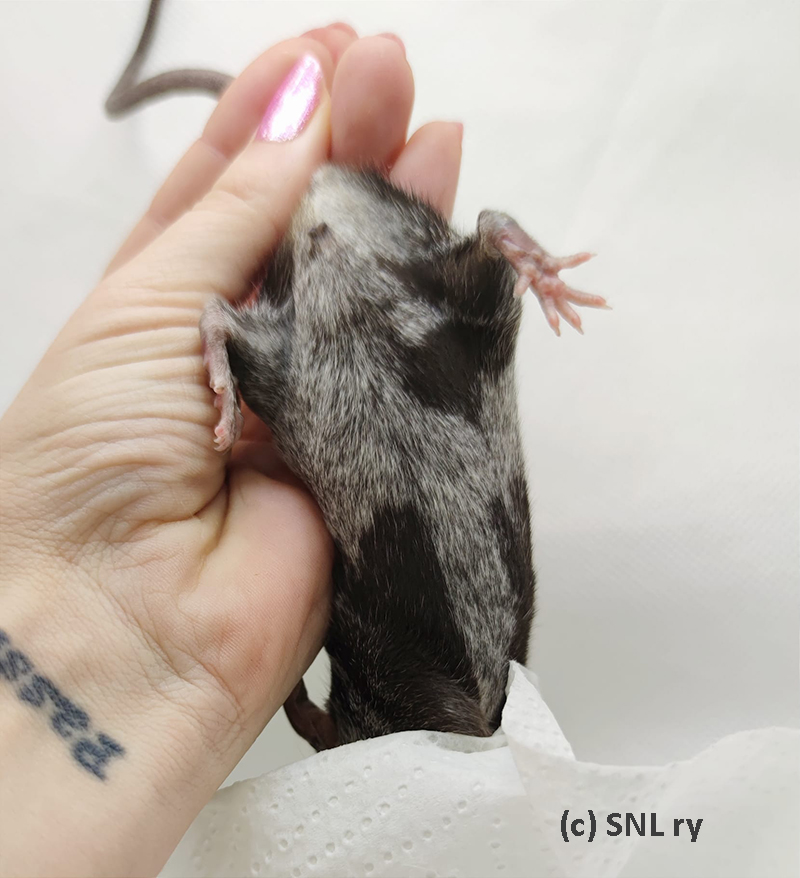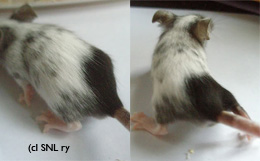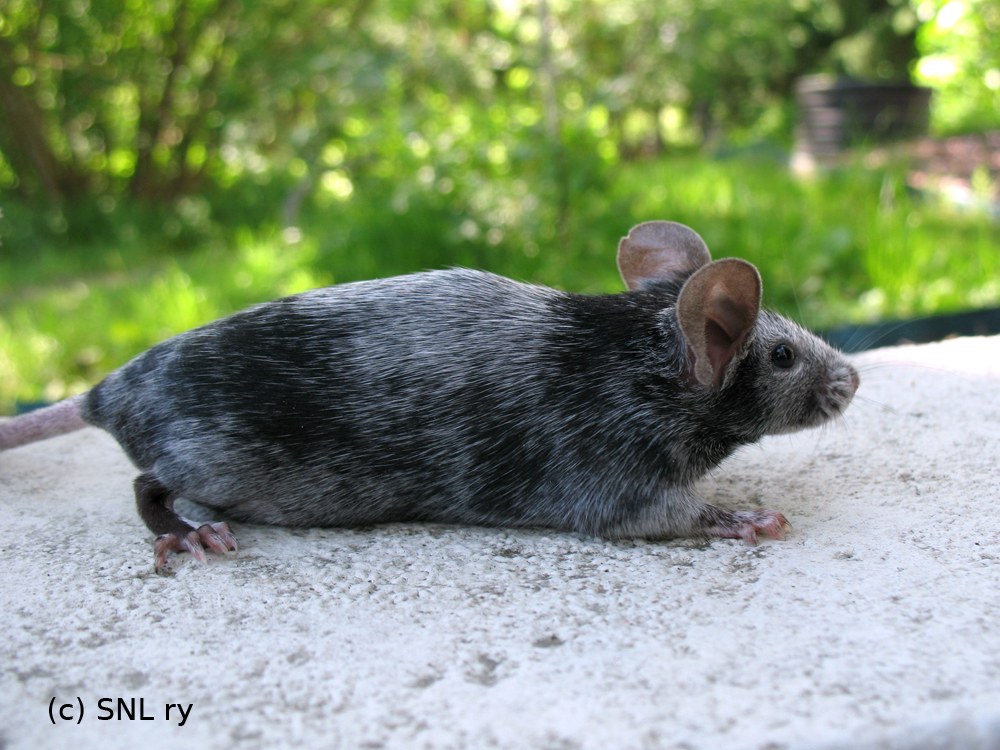Varieties
Marked
Merle (me)
Rn/Rn or Rnfkl/Rnfkl - not quite certain
"Merle mice may be shown in any recognized color or marking. The unique feature is a pattern of dark solid-colored patches which should be well defined and distributed evenly throughout the entire lighter roan background color so as to create a marbled effect. Stripes and streaks to be considered added beauty. Demarcation lines running through the mouse's midlines are typical. Eye color to match base color."
Breeding information below the pictures.
Quick Look
Merle is a roan mouse, with non-merle areas in the coat. That is, areas of the base colour + areas of merle colouring
The exact genetics of merle isn't quite certain and there are comments about there being a recessive merle along with semidominant Rn (and Rnfl) genes. What these recessive roan and merele are genetically, isn't known. Both Rn and Rnfl are spontaneous mutations. They are possibly alleles, possibly members of the same gene cluster. With some roan breeders the roaning is connected with tan belly turning white, but that isn't the case with everybody
According to MGI, Rn/Rn makes a mouse with "white hairs are randomly distributed but to the extent that the coat is lightened" and that "variability may be influenced by modifier genes".
Furthermore, Rnfl/Rn+ is said to behave as this: " white hairs are randomly distributed and mice appear variegated, the amount of unpigmented hair increases with age" and " Rn gives a near wild-type coat with a few small light-colored spots whereas this allele produces a uniform light coat rarely with wild-type patches. The interaction of the two phenotypes in genetic crosses prevented conclusive identification of crossover phenotypes".






